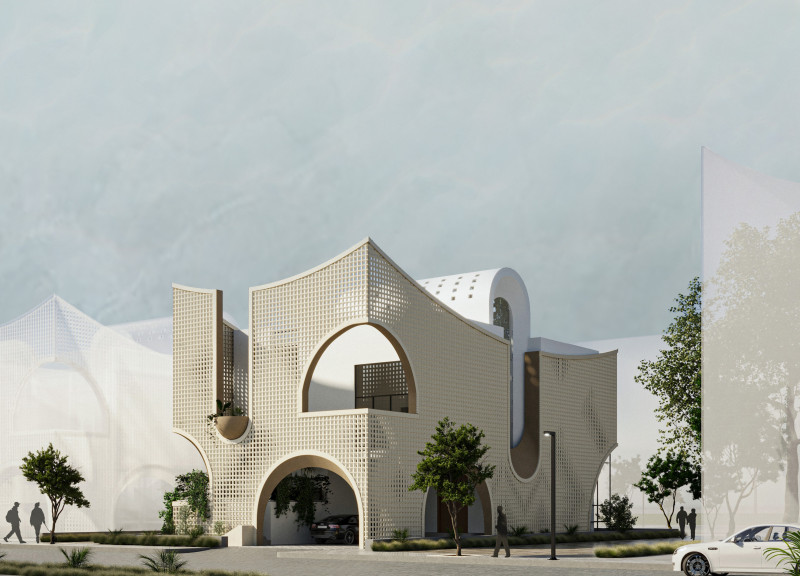5 key facts about this project
The primary function of this architectural design is to provide a versatile space that accommodates a variety of activities. This flexibility is key, allowing the space to adapt to the needs of its users over time. The layout promotes flow and connectivity, with open areas encouraging social interaction while also accommodating quieter spaces for individual activities. This aspect of the design underlines the project’s commitment to community engagement and user experience.
The architectural design incorporates various elements that contribute to its overall character and functionality. The facade, characterized by a careful selection of materials, acts as a defining feature of the building. Natural materials such as wood, metal, and glass have been used to create a warm yet modern exterior that resonates with the surroundings. This choice not only enhances the visual appeal of the project but also promotes sustainable practices by utilizing materials that are either locally sourced or have a lower environmental impact.
In addition to the materials used, the spatial composition is significant, as it prioritizes natural light and environmental integration. Large windows and strategically placed openings allow daylight to penetrate deep into the interiors, reducing the reliance on artificial lighting during daytime and establishing a strong connection to the outside environment. This thoughtful integration of natural light elevates the ambiance of the interiors and enriches the user experience.
Moreover, the design has incorporated green spaces, maintaining a balance between built and natural environments. These areas not only enhance the aesthetic value of the project but also contribute to biodiversity, promote mental well-being, and create ecological benefits. The landscaping is designed to be low-maintenance while providing an idyllic setting for both residents and visitors.
A unique aspect of this project is its commitment to sustainability through innovative design strategies. The integration of energy-efficient systems and renewable energy sources illustrates a forward-thinking approach to resource management. Features such as solar panels, green roofs, and rainwater harvesting systems have been implemented, positioning this project as a model of environmentally conscious architecture.
The architectural plans articulate a clear vision of the overall structure, detailing the relationships between various elements within the building. The architectural sections offer further insights into how space is effectively utilized, revealing the careful consideration of height, volume, and circulation paths. These details underscore the meticulous planning that has gone into the design phase, ensuring that every aspect serves a functional purpose while contributing to the overarching narrative of the project.
The architectural designs reflect a blend of modern aesthetics with functional requirements, embodying an essence that is both practical and visually appealing. The unique use of geometric forms creates a dialogue between the building and its environment, allowing it to complement its surroundings while standing out as a significant architectural statement.
As the reader explores this project further, a closer examination of the architectural plans, sections, and design details will provide a deeper understanding of the innovative approaches taken in this remarkable endeavor. Engaging with these elements will illuminate how the project not only aims to meet the needs of its users but also enriches the architectural landscape within its context. Delve into the specifics of this project to appreciate the myriad architectural ideas that have been thoughtfully woven into its design.


 Adel Mohamed Wafik Mohamed Mohamed Badrawy
Adel Mohamed Wafik Mohamed Mohamed Badrawy 























